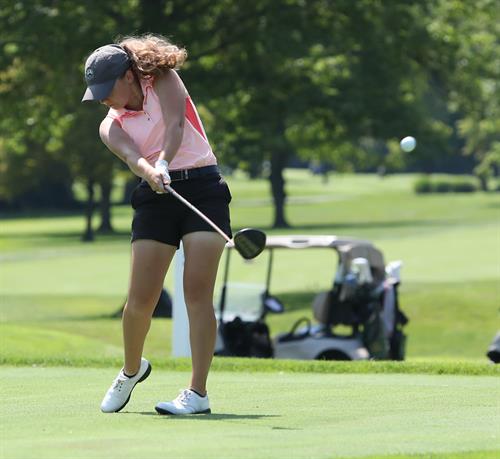 When it comes to modifying swing mechanics for power, let’s begin by stating the obvious - the fastest way to increase your distance is to make solid center face contact on the club! So most players could easily pick up a few yards with just a standard golf lesson and proper fitting. With that said, we will discuss some of the techniques and swing modifications that have been shown to help generate more power. However, none of these will matter without solid contact on the club face. When it comes to modifying swing mechanics for power, let’s begin by stating the obvious - the fastest way to increase your distance is to make solid center face contact on the club! So most players could easily pick up a few yards with just a standard golf lesson and proper fitting. With that said, we will discuss some of the techniques and swing modifications that have been shown to help generate more power. However, none of these will matter without solid contact on the club face.The lower body has the most modifications for power and can also generate the greatest increase in power. Most of these modifications are very different from what you would consider the standard golf swing teaching mechanics taught by most golf teaching professionals today. From allowing the lead foot to lift and rotate, to jumping in the downswing, to bending the lead knee, there are many small tweaks that can make a significant impact of producing power to the golf ball. Lift Lead Heel Let’s start with an old school trick that has helped some of the biggest hitters in the world improve their power - lifting the lead heel in the backswing. This has the potential to do two important things: ● It can immediately allow the player to make a bigger turn, even without great flexibility. This can help encourage less separation between the upper and lower body during the backswing and potentially encourage downswing loading verse backswing loading. ● The act of re-planting the lead heel into the ground during transition can be a great cue for proper weight shift. This is one of the first recommendations we would recommend for players that have limited mobility and need more turn and weight shift in their swing. Lead Foot Spin Many players and coaches feel that the lead foot needs to stay firm and planted on the ground through impact. This is just not the case with many of the biggest hitters in the world. Allowing the lead foot to spin and rotate externally through impact is absolutely OK for speed. Actually, many Long Drive competitors don’t even have their lead foot on the ground at impact. Vertical Lift Vertical thrust is one of the most important power sources in the golf swing. Many of the big hitters today utilize this vertical thrust as their number one power source. Many coaches discourage a vertical jumping of the lower body during the downswing, but once again, this can add a ton of speed to the club. The key to executing this movement correctly, is to not early extend at the same time. Many kids will jump excessively in their golf swing since it is the only power source they have developed yet. Bent Lead Knee Through Impact For so long we have been told that the lead knee needs to straighten and post up through impact. A bent lead knee can do a couple of things: ● It can help stabilize the large rotary forces being produced by the body and club. ● It can help produce an upward attack angle by shallowing out the club. ● It can act as a shock absorber (like shocks in your car) for the large compression forces being generated in the swing. ● This is one of the first recommendations we would recommend for players that have limited mobility and need more turn and weight shift in their swing. Load Back There have been many debates in golf over the past few years about where the weight should go in the backswing - lead side or trail side. Well there is no debate on the Long Drive Tour. If you want to create maximal ground reaction force, you need to have a great weight shift. A great weight shift begins with loading the trail leg and then driving forward onto the lead leg during the downswing. Like we mentioned earlier, many of the longest drivers don’t even have their lead foot on the ground during the backswing. | 
 When it comes to modifying swing mechanics for power, let’s begin by stating the obvious - the fastest way to increase your distance is to make solid center face contact on the club! So most players could easily pick up a few yards with just a standard golf lesson and proper fitting. With that said, we will discuss some of the techniques and swing modifications that have been shown to help generate more power. However, none of these will matter without solid contact on the club face.
When it comes to modifying swing mechanics for power, let’s begin by stating the obvious - the fastest way to increase your distance is to make solid center face contact on the club! So most players could easily pick up a few yards with just a standard golf lesson and proper fitting. With that said, we will discuss some of the techniques and swing modifications that have been shown to help generate more power. However, none of these will matter without solid contact on the club face.